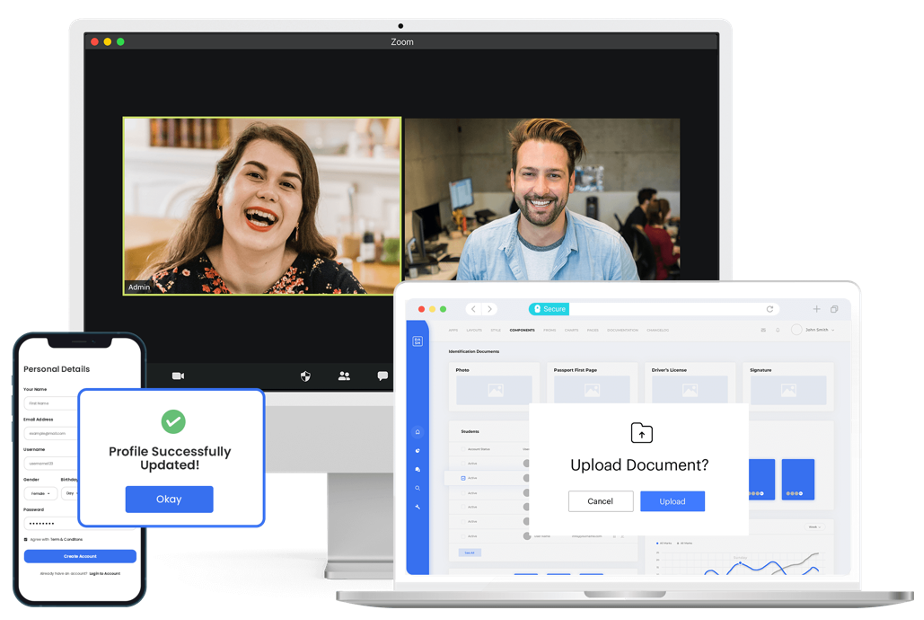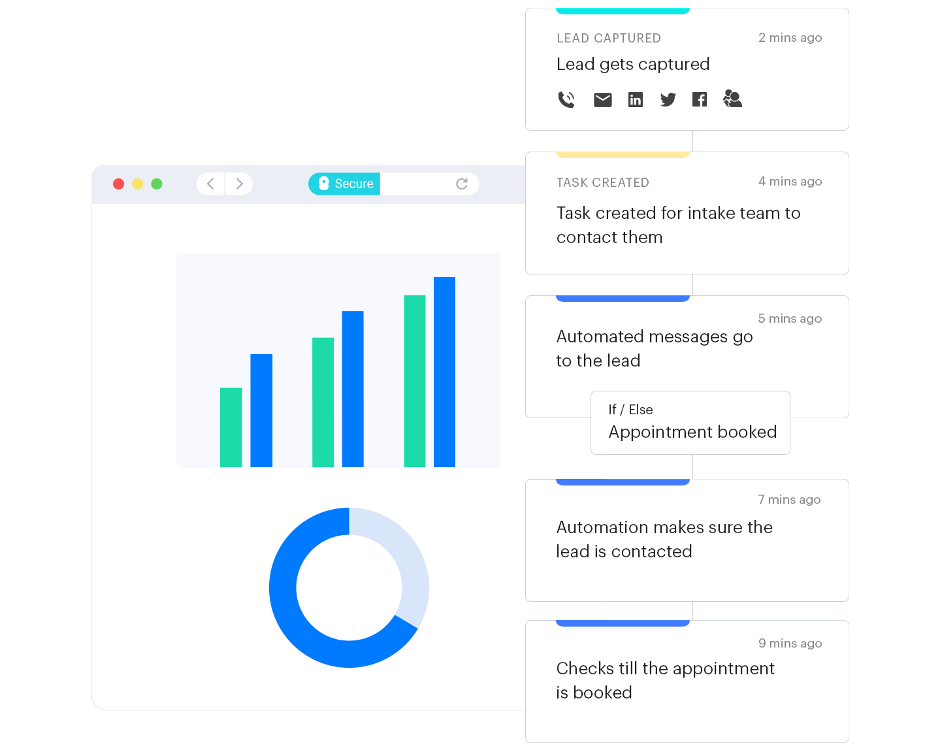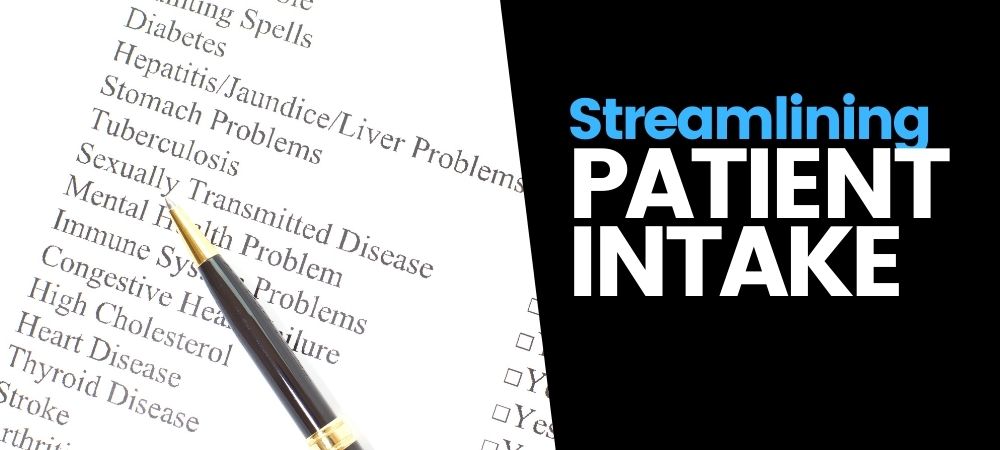The efficiency of your patient intake process is high priority? Please say you agree.
As you know, the patient intake process is a critical touchpoint where you’re likely to make a “first impression” on a new patient, which may stick with them forever.
So, are you generating a pleasant experience for your patients?
Patients will not stay in your health service if there are errors or lags in the intake process. This has a direct impact on referral satisfaction and profitability. Here’s an illustration of what can happen if a patient doesn’t return.
Research shows that no-show rates might be as high as 30% across the country, which ends up costing the healthcare business $150 billion per year.
However, you can reduce patient no-shows by improving your patient intake process. It is also the need of the hour, because:
- In 2022, hospitals can expect a 4% hike in patient volume.
- Access to specialty care is less now than it was in 2019, which reveals some new gaps in the healthcare system.
By optimizing your patient intake process, you’ll be able to handle more patients—without neglecting the patient experience.
So let’s discuss how you can perfect the intake process.
What is patient intake?
Patient intake is the process of collecting patient information prior to their visit. It includes demographic, clinical data, consent forms, insurance, payments, and other key pieces of information. The patient intake steps apply to both new and returning patients.
Intake processes can be time-consuming and require active participation from both the patient and the healthcare provider. Managing the intake processes entails learning the ins and outs of each patient. The next section provides a quick patient intake checklist to ensure you’ve got everything covered.
Patient intake checklist
A checklist will help you ensure your practics runs smoothly.
Typically, a patient intake checklist covers the tasks associated with the following processes:
- Forms for patient information that you hand out when they arrive. The information can range from details like their age to their medical history. These forms will vary depending on the service you provide. For example, if you’re a dentist, you will ask them to answer questions related to dental health.
- Request for details regarding insurance. Insurance coverage tends to be tricky if you aren’t a general hospital. If you provide specialized care such as physiotherapy the policies will be different. So, ensure you know what policy relates to your service.
- Upload forms for HIPAA compliance and ensure you receive the necessary authorization. Only after you receive the verification, create a patient profile.
- After this, you can schedule appointments, send emails for reminders, and so on. Finally, if consent is necessary, ensure you ask for it and upload the proof after.
Checklists can help you standardize the admission process. We’ve assembled the tasks associated with the intake process and have created this list.
If you’re planning to use digital patient intake software, you can use this checklist to ensure you’ve got all the tasks covered.
Studies show the global digital health industry will be worth $430.52 billion by 2028. Over the next few years, a digital patient intake process will become more widespread.
Next, let’s look at the challenges health providers face with patient intake processes—and how technology can help overcome them.
Patient intake process challenges
On the surface, it may seem like things are working smoothly. But the dissatisfaction of the patient, who had to wait hours before finally meeting the doctor or practitioner reveals the inefficiencies of the intake process. Let’s take a closer look at these challenges.
- The typical patient intake approach is very paperwork intensive and time-consuming. When a patient chooses to arrange a visit, the process begins. The patient would first call the clinic and wait to connect with a receptionist. Already, time’s being wasted.
- Research shows that healthcare providers with high wait times receive significantly lower ratings. The practices with the best reviews have average wait times of 13 minutes. Whereas those with the worst reviews had wait times of 34 minutes.
- Filling in personal details and the consent form is again a time-consuming process. Apart from this, handwritten forms are prone to errors. Patients also don’t have the time to sit and write these details if they are facing an emergency. Digital patient intake forms are now paramount.
Processes like documentation, information collection, and storage can all happen in the cloud, making the information easily accessible.
How technology can help you improve the patient intake process
Here are the ways in which you can automate different steps of the intake process.
1. E-signature and digital documentation tools
7 out of 10 patients (Source: kentico) wish to be able to contact their providers digitally.
You can simplify the patient-provider contact with online intake forms. You can provide patient portals where they can register, submit the required documents, e-sign consent forms whenever required, get access to test records, and more.
Alternatively, you can sign-up for specialized tools. If you do, be sure the apps you choose are HIPAA compliant. It’s your responsibility to safeguard your patient’s info.

2. Create a patient profile and segment patients according to their needs
An online or digital patient profile is a must. A patient profile is a record or account that includes important information about your patients and their interactions with your clinic. It generally includes:
- Basic information and demographic details like gender, age, family, etc.
- Medical history and any genetic conditions or allergies
- Current health issues or concerns about their health
- Consulting physician details, their schedule, and more
These specifics can assist you in understanding how patients interact with your service. A patient profile aids in the customization of care and the provision of individualized support.
3. Use a CRM for automatic data collection, storage, and retrieval
Every practice hoping for success must invest in a healthcare CRM. The global CRM market in healthcare is forecast to reach 17.4 billion dollars by 2023.
The patient intake process will be much smoother with a CRM as it can:
- Create accurate patient profiles
- Distribute patient inquiries to the available providers in a round-robin system
- Schedule appointments automatically when patients book them through the website
- Create predictive reports based on a patient’s family and individual medical history
- Centralize patient information across different departments and healthcare personnel
- Send notifications and follow-up reminders to check-in with patients who have left the clinic
- Track all the interactions a patient has with your practics
- Integrate with the hospital management system, EHR/EMR, payment software, and other tools you use to get a complete picture of your patients and processes
Healthcare CRM boosts your patient experience and improves overall patient relationship management. You can also collect documents digitally and store them in HIPAA-compliant software.

The best patient intake software for your practice
A solid patient intake procedure consists of three essential components:
- Careful management of the wait times, data, and privacy of the patient
- Delivering a convenient patient experience
- Ensuring all information is precise and consistent
Some of the benefits of a digital intake process include:
- Automation and increased convenience of online scheduling
- Electronic patient intake forms
- Digital documentation and tracking of patient activities
- Online payment options
A stellar system for your healthcare facility is a must-have nowadays. If you’re on the lookout for one such software, LeadSquared’s healthcare CRM is the best software to automate your patient intake process.
With LeadSquared’s HIPAA compliant CRM, you can:
- Automatically distribute appointment requests and other inquiries.
- Group members of one family together as a unit
- Personalize communication at each phase to improve patient involvement and communication
- Store and access all patient demographics, social profiles, and behavioral data
- Collect post-appointment patient feedback
- Make it easy to onboard doctors
- Manage referrals
- Create multiple patient journeys across the range of services you offer
- Seamlessly integrate with EHR/EMR, medical billing software to provide a 360-degree view of patients.
“We’ve roughly doubled the number of leads we’re able to manage. A lot of that is due to the time-saving factor of working with LeadSquared. We’re able to cut down our turnaround time responding to inquiries and reach out to and communicate with many more leads.”
Tamara Young, Director of Marketing, PSYCH









